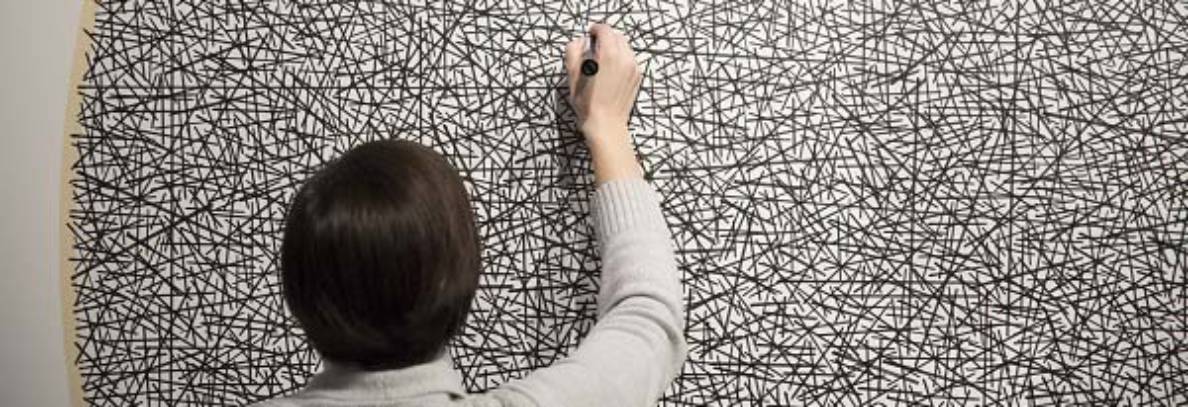KILOMETRE – 1 km walk
I began this project by reflecting on how I spend most of my kilometres; either in cars or walking. At school, walking is something I do a lot: AirPods in, playlist on. Like many people my age, I move through my day with headphones on, listening to music.
For 1 km walk I decided to turn this daily activity of walking into something more deliberate. I walked exactly one kilometre, 500 meters there and back. I did this while listening to songs referencing walking: Walking in the Air, Walking on the Moon, and Walking After You. Honestly, I thought it would be slightly funny to walk to songs about walking.

I enjoyed reflecting on how small choices, like a playlist, can add humour and creativity to an otherwise mundane and ordinary distance.
HIP-HOP EXHIBITION – Field Trip!
The Culture: Hip-Hop & Contemporary Art in the 21st Century was organized around six themes: Language, Brand, Adornment, Tribute, Pose, and Ascension, each of which highlights a different aspect of hip-hop’s cultural reach. Walking through the gallery, I was captivated by the way artists used hip-hop as a medium to discuss deeper social issues. Two pieces, in particular, stood out to me: For Whom the Bell Curves by Robert Pruitt and Anointed by Carrie Mae Weems.
For Whom the Bell Curves by Robert Pruitt (2004)


When I first saw this piece I thought of how it fit the aesthetic of hip-hop, the shiny gold chains. However, when I read the blurb beside the piece I found a deeper meaning. In Pruitt’s work the intricate gold links take the shape of the transatlantic slave trade routes.
It made me reflect on how hip-hop, while often celebrated for its extravagance and success stories, also carries the weight of a complex and painful past. Pruitt’s piece reminded me that the roots of hip-hop are deeply tied to resilience, struggle, and the ongoing fight for justice.
Anointed by Carrie Mae Weems (2017)

Carrie Mae Weems’ Anointed immediately captured my attention with its striking red tones and regal composition. Featuring the legendary Mary J. Blige receiving a crown, the piece celebrates her status as the “Queen of Hip-Hop Soul.” However, Weems takes this idea even further by placing Blige within a historical lineage of Black women icons, such as Dinah Washington.
Weems notes ”And of course, there’s Jean-Michel Basquiat’s constant use of the crown in relationship to jazz and music, and African American cultural utterance”
Weems’ positions Blige in a way that shows the importance of Black women in shaping music, culture, and art. Seeing this piece at the AGO made me appreciate how hip-hop is not just about music, but a constantly evolving cultural movement with deep artistic and historical significance.
NYT ARTICLE – Notes on Katja Heitmann’s Project “Motus Mori”
- Describe the work discussed in the article and the unique challenges – as well as the unique gifts- that come with attempting to archive personal movements? The article discusses Katja Heitmann’s project, “Motus Mori,” which collects and archives personal movements, habits, and tics as a form of dance. Instead of using digital or written records, the project relies on dancers to physically preserve these gestures in their muscle memory, performing them in installations. This is a challenge since the archive exists only in dancers’ bodies. If a dancer stops, part of the archive disappears. This archiving of personal moments creates a human connection between donors, dancers, and audiences. For families of deceased individuals, watching their loved one’s movements performed can be a form of remembrance.
- Discuss one or two examples of movements in the article – what strikes you about them? One example that stood out to me is how Heitmann’s father’s movements were preserved like any other donor’s. He was a dance teacher, and his habitual gestures (scratching his scalp and instinctively pulling in his stomach when passing a studio mirror) were archived through the dancers. This resonates with me personally because growing up as a dancer has shaped my own movements and gestures. The way I sit, my posture, and my instinct to adjust myself when passing by mirrors all come from years of training. Much like Heitmann’s father, dance has influenced my unconscious habits and how i move through the world.
- Describe the habitual movements/unconscious gestures, tics of 3 people you know well. How do individual body parts move, and how does the whole body interact? My best friend gently spins her nose ring whens she’s thinking or nervous. I notice it especially when she is trying to make a decision. She will also place her index finger on her chin when she is driving and is unsure of where she’s going. I’ve found myself placing my index finger on my chin when i’m thinking. Even while typing this I found myself doing it. One of my roommates does this pose jump thing sometimes when she is about to exit a room. She flicks one of her legs back and like does a little turn hop. It’s hard to describe, but its super distinct. She does it especially when she wants something or has just asked for something I have. A guy I used to work with would always crack his knuckles especially when he was having conversations with people. He would also always fiddle with his lanyard hanging out of his pant pocket. When there was no customers around he would lean and wait while twirling the lanyard in his fingers.
VIDEO ART – One Feat Three Ways: Peeling an Orange
ONE SHOT – 29
EDITED – Openers Opening
LOOP – Over and Over
Brainstorming and filming progress pics

This project started with the idea to peel an orange. The result was three videos — 29, Openers Opening, and Over and Over. Each video explores the act of opening an orange in different ways.
In 29, instead of peeling an orange in one satisfying piece, we did the opposite, tearing it apart bit by bit using only our teeth. Would not recommend, orange peels taste gross.
For Openers Opening, we tested tools that are meant to open other things to see if they could peel an orange. It turns out a door handle is not the best item to peel an orange with. Most of them didn’t work that well but the bottle opener surprised me.
Over and Over was an experiment in repetition. While one of us peeled an orange, the other tried to put it back together, creating a never-ending loop.
READING RESPONSE – Bridget Moser’s Project “My Crops Are Dying But My Body Persists”
Bridget Moser’s My Crops Are Dying But My Body Persists is a weird and unsettling take on privilege, consumerism, and existential dread. She pulls from internet culture, pop references, and absurdity to create something that feels slightly ridiculous. Charlene K. Lau’s review breaks down how Moser uses humour and surrealism to critique materialism.
One of the most striking moments in the video is when Moser braids cooked spaghetti to a soft, dreamy soundtrack, mimicking those asmr videos online. Lau points out that the sequence is “pleasurable and calming to watch,” but at the same time, it’s kinda pointless. It made me think of how digital media can be numbing, rather than actually making me think.
Her use of props including all the rose-gold, the pink Himalayan salt, the pink everything, I think captures influencer culture’s obsession with curated aesthetics, and overconsumption. I found it all tacky and excessive. I can’t imagine a house filled with all that type of stuff.
Honestly it made me uncomfortable.
It made me think about how people are drawn to beauty and aesthetic perfection, yet at the same time we recognize its emptiness. That’s probably why I felt uncomfortable watching it. I thought about the absurdity of the things we consume, both online and in real life. I found Moser’s work bizarre but thought-provoking. But maybe thats the point, to build unsettling tension. As Lau puts it, “Although some odd visual comforts might recede… the absurdity remains.”
AUDIO ART – 4:38 AM: icicles melting out my bedroom window
This is the sound of icicles melting at 4:38 AM.
Sometimes when I can’t sleep I’ll open my bedroom window and just listen. I feel the cool air on my skin and listen to all the noise outside that I usually don’t pay attention to, the drifting wind, animals rustling, rain, thunder, lightening, trees moving and creaking, cars going by, and icicles melting. I found the repetitive nature of the dripping icicles quite meditative. I also thought the melting of icicles illustrated the cyclical nature of the seasons really well.
OPEN STUDIOS – Images
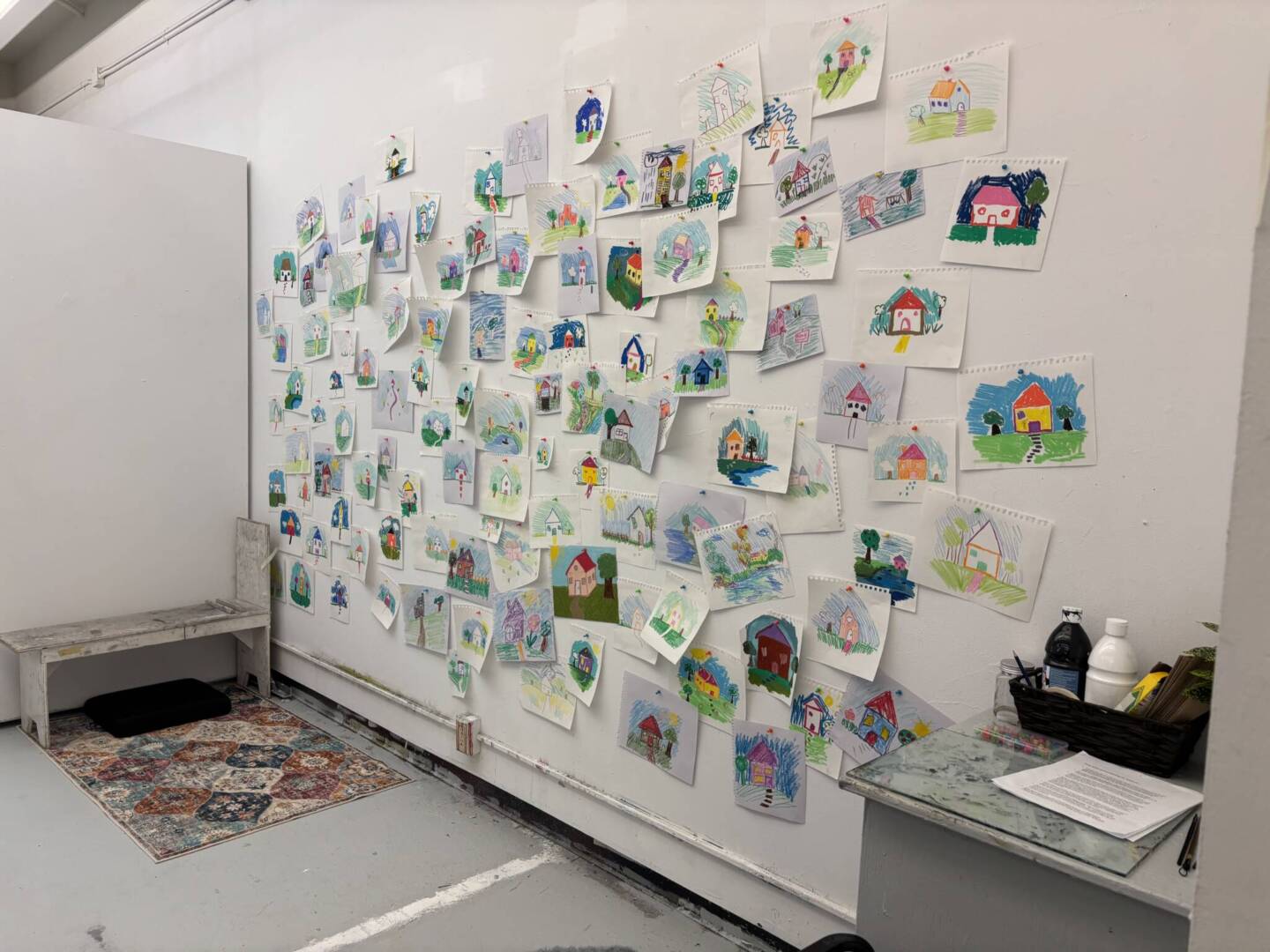
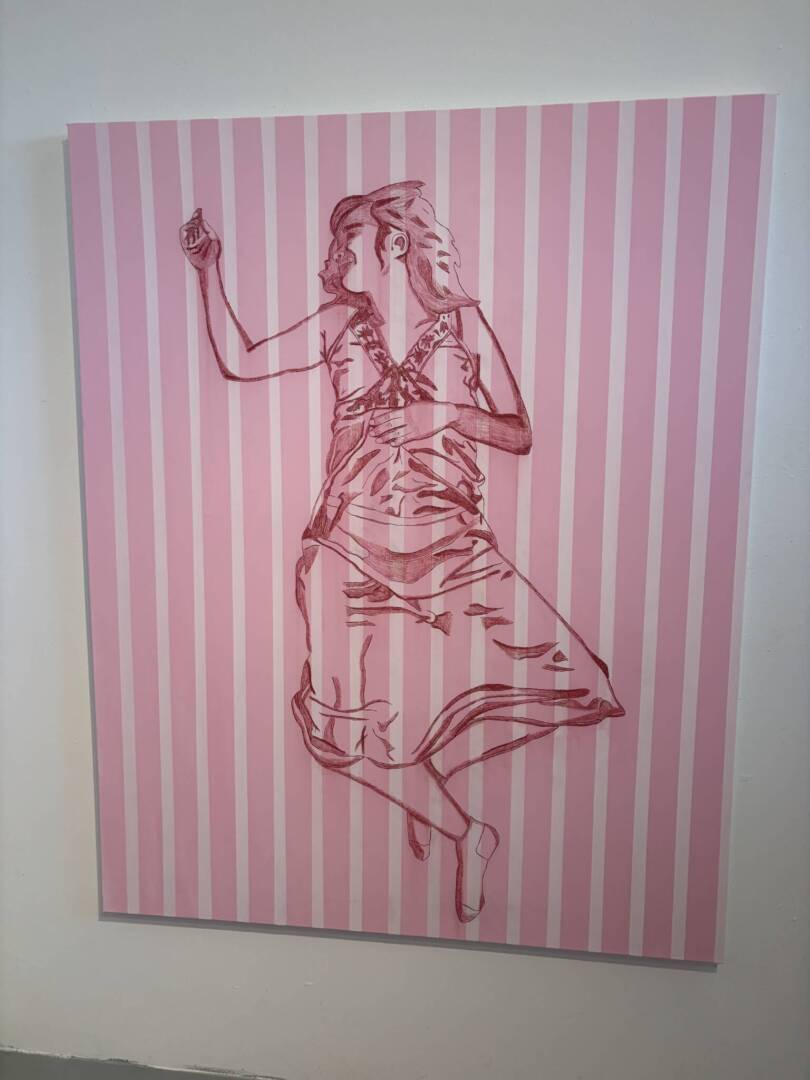
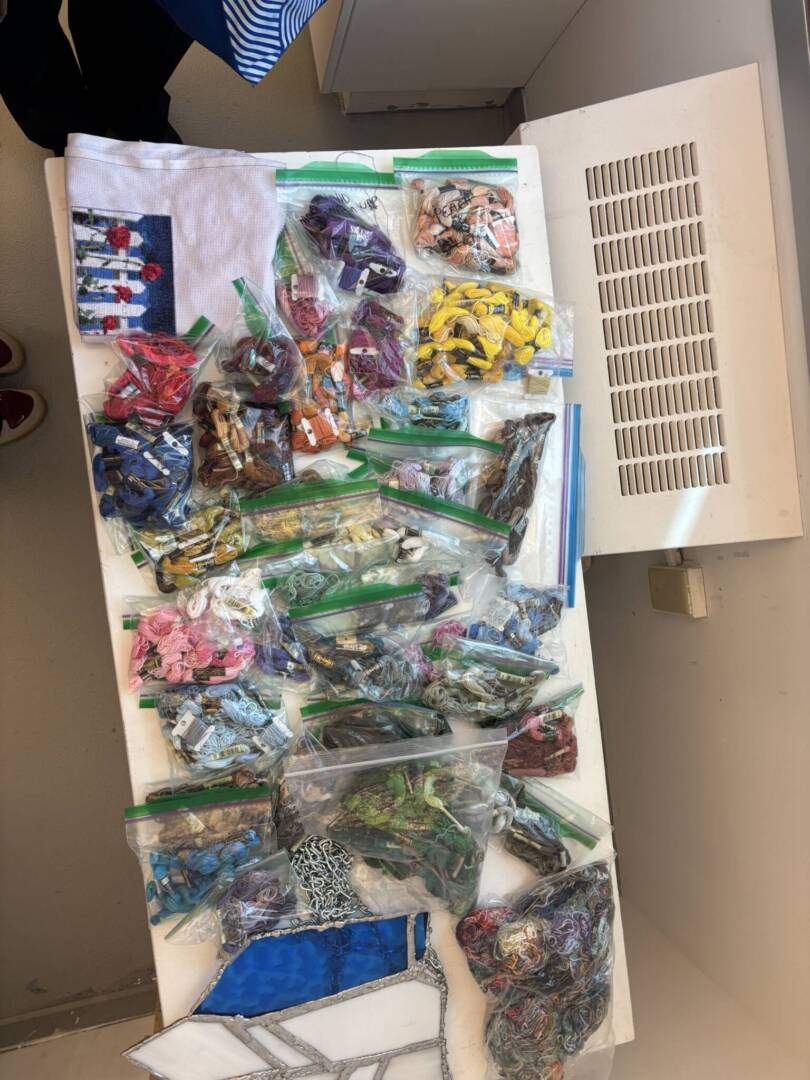
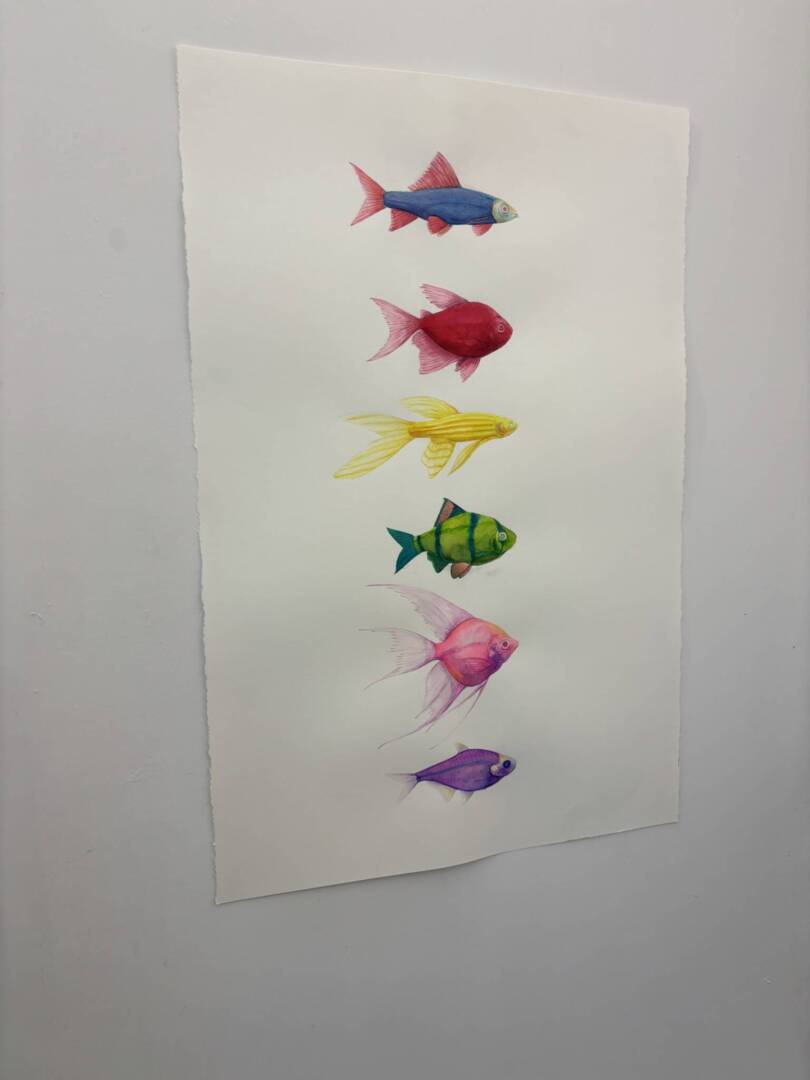
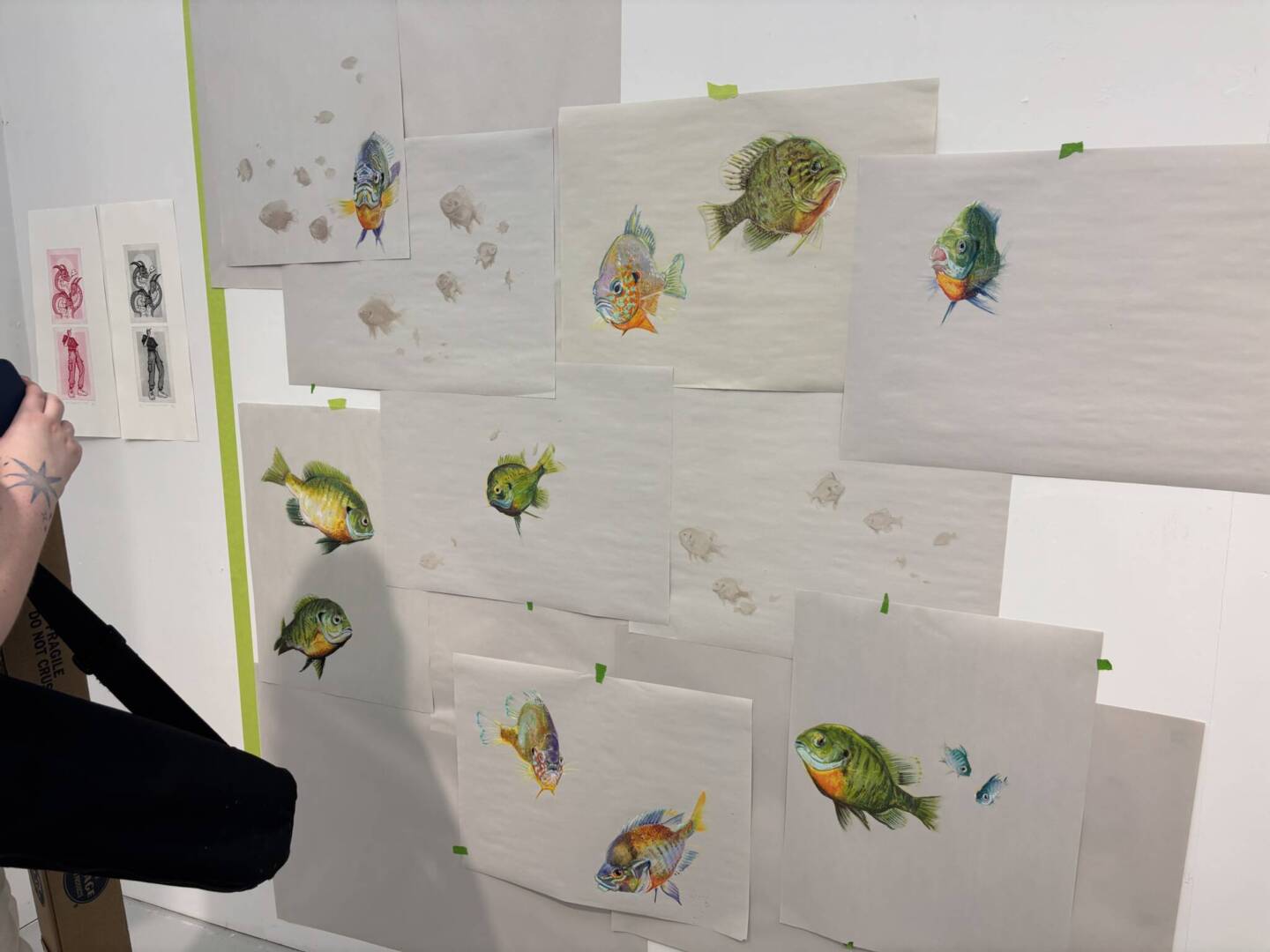
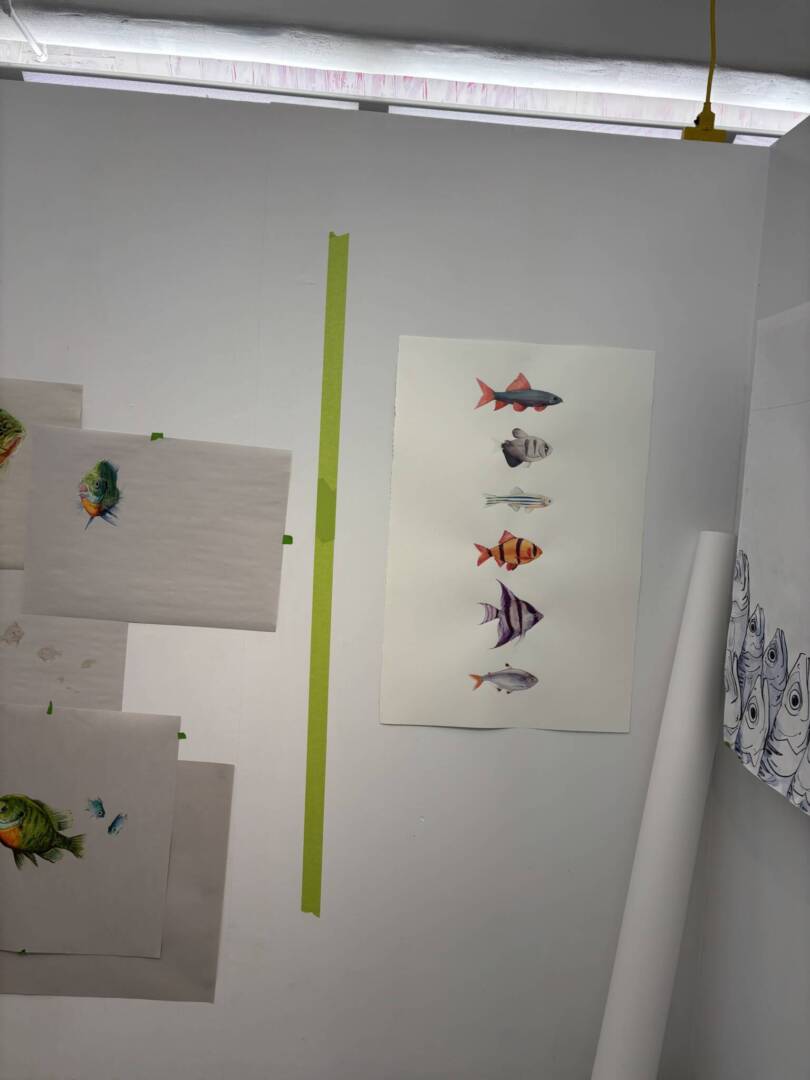
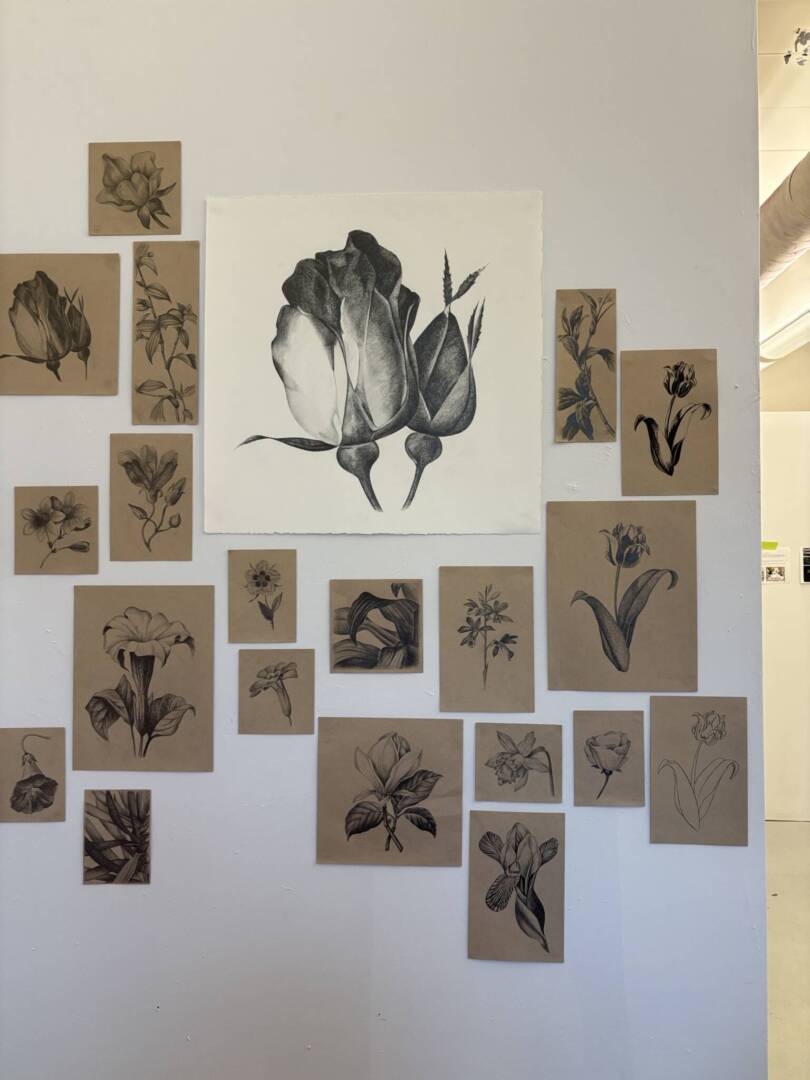
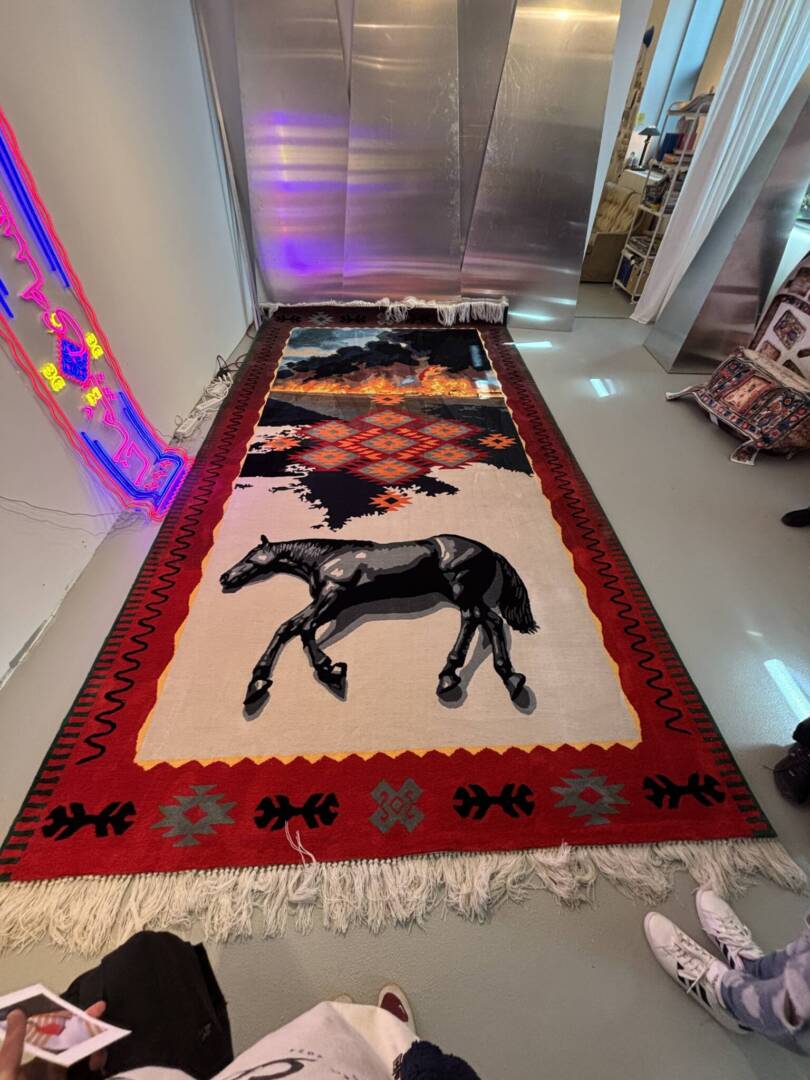
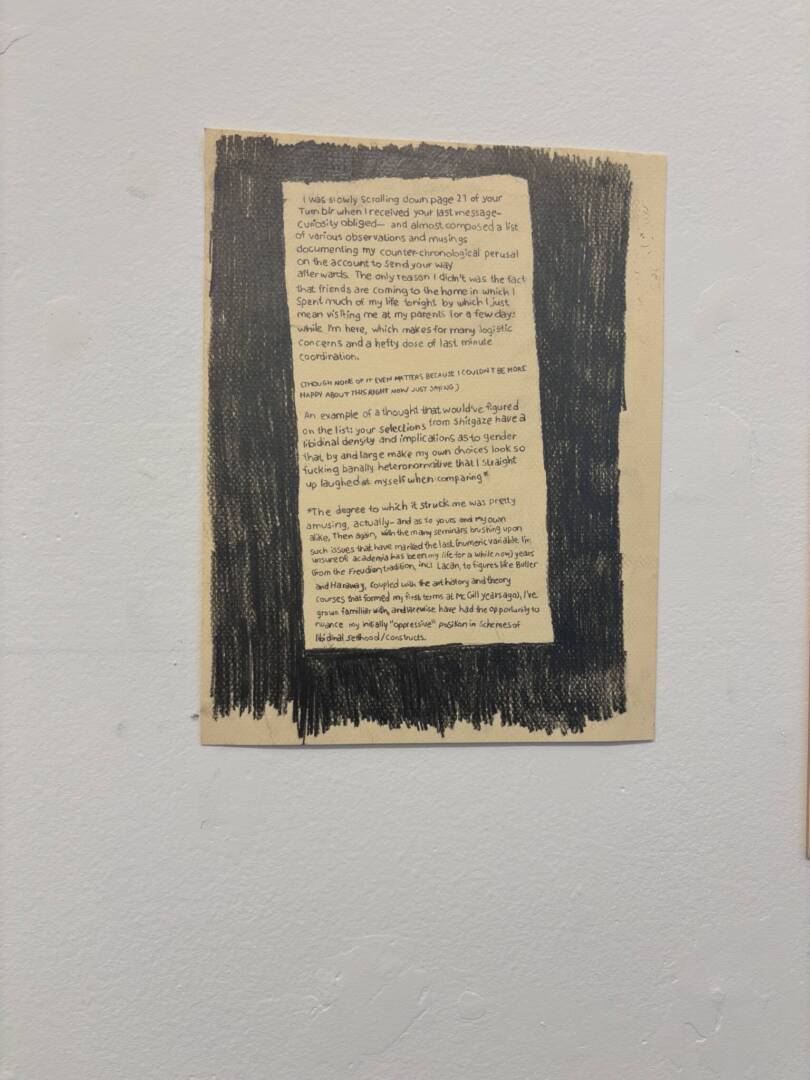
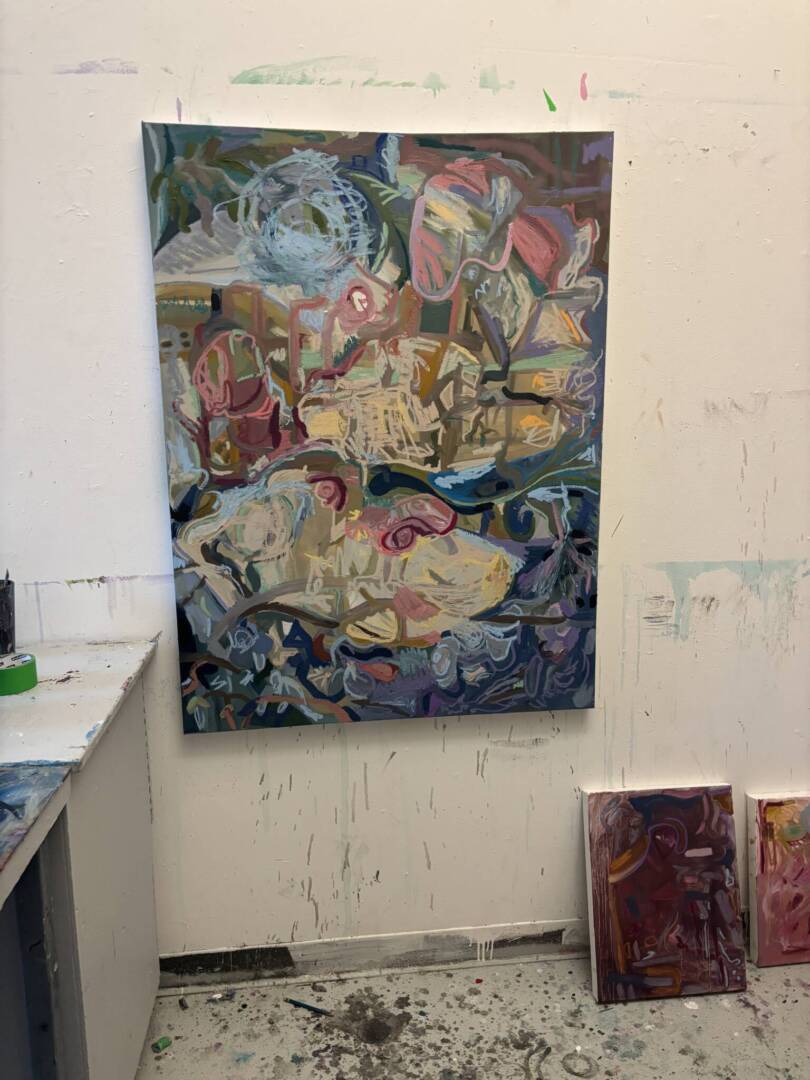
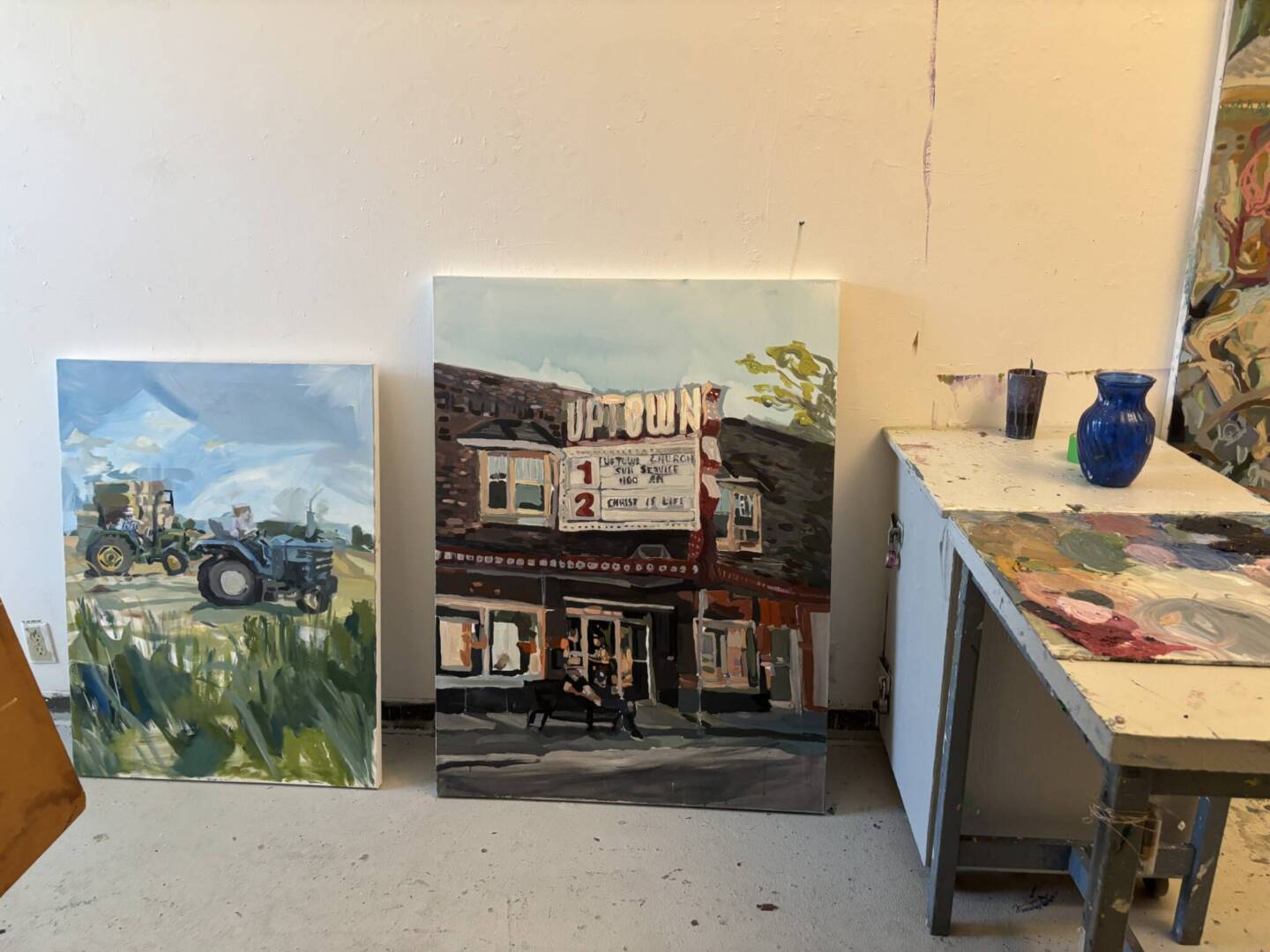
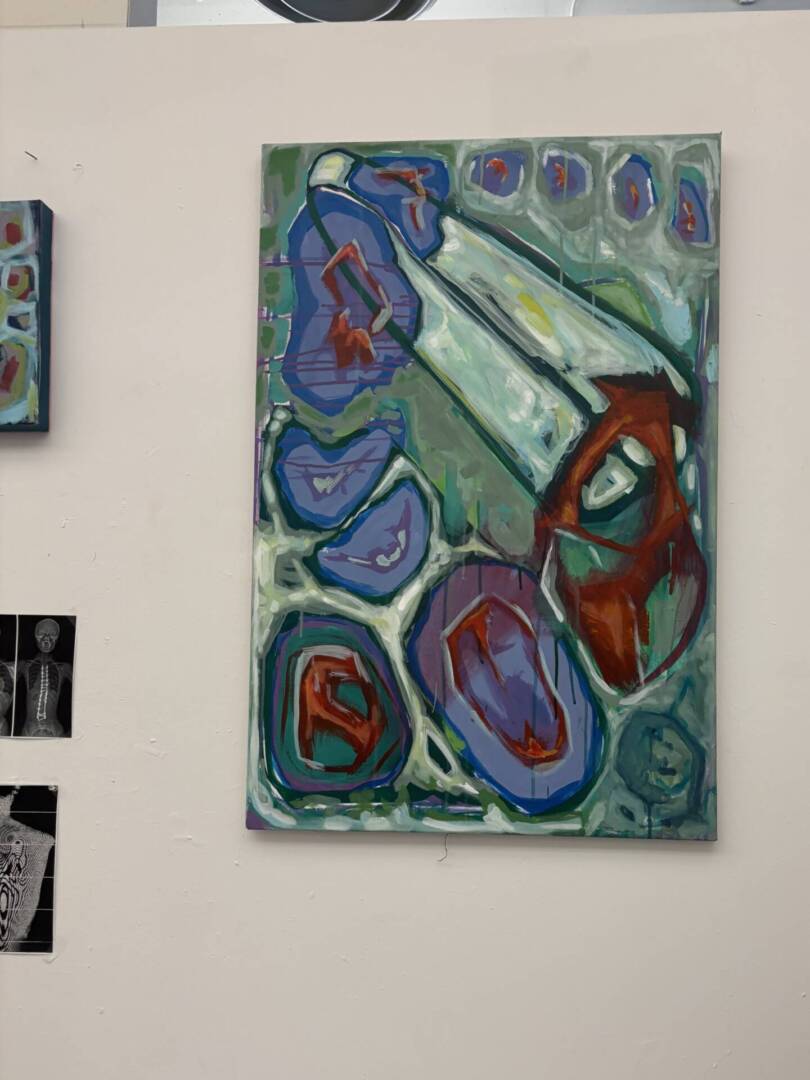
CONCEPTUAL PORTRAIT – Love Mom
Love Mom is a small artist book and a conceptual portrait built from small, personal objects. Each page pairs a note my mom wrote before a canoe trip with the bracelet I wore that summer. The bracelets were made with different ropes each summer. The bracelets are simple, practical, and meant to signify the the trip. Worn by everyone in the group, they became quiet markers of time, place, and shared experience. Together with the notes, they reflect a personal rhythm of leaving, returning, and growing up with my mom.

ARTIST MULTIPLES: Buttons – wearing your heart on your sleeve
For this series of buttons, I wanted to explore the the way my female friends speak to each other, and to themselves. I’ve noticed that the women I know tend to make more self-conscious comments than the men do. Phrases like “am i annoying?” or “do i look okay?”. Even though sometimes they’re said jokingly, I think that these comments reveal something deeper. My experience as a women, along with many others, was growing up being told to be more likeable or agreeable. Don’t be too loud, don’t take up too much space, don’t make people uncomfortable.
The buttons are meant to be worn on jackets, bags, shirts, anywhere visible.

